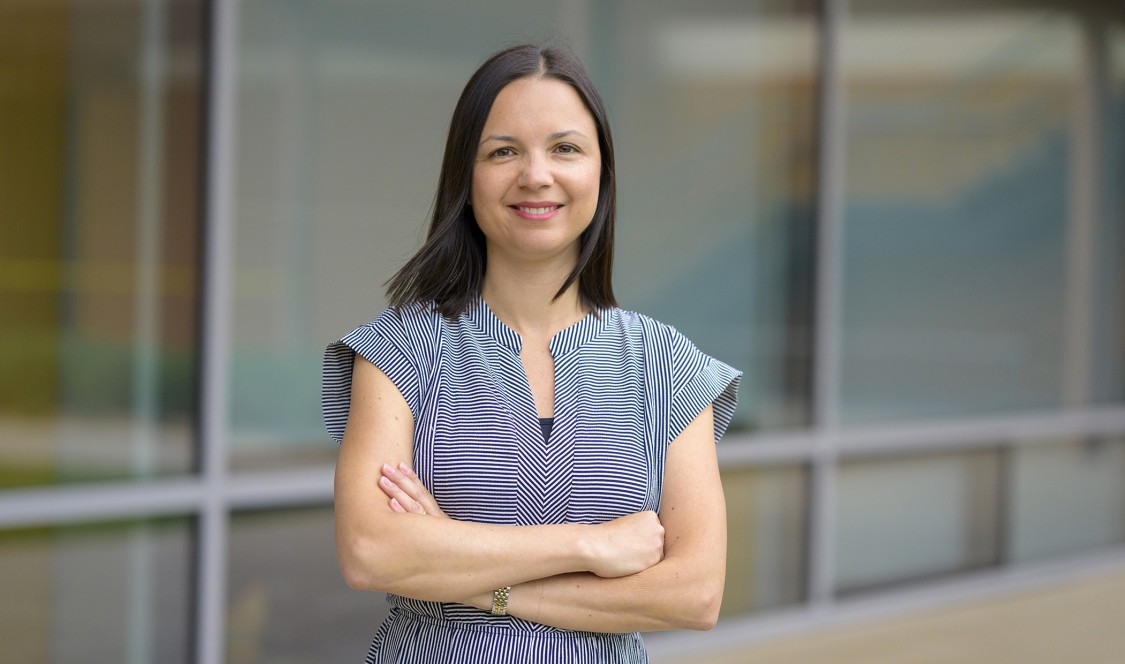Prof. Juliana Fillies was drawn to Latin American history and literature as a means of better understanding her own culture.
Fillies, who teaches in the Modern Languages and Literatures department at CMC, was recently recognized with the American Philosophical Society’s Franklin Research Grant, awarded to scholars across disciplines to support field work and other research-related activities. This award will enable her to travel across Latin America this summer to complete research for her first book on race and representation through photography.
“Visiting the archives in person will enrich my research tremendously because it will allow me to expand my knowledge about the pictures and their contexts of production,” Fillies said.
Born in Brazil, Fillies moved to Germany when she was 16. At the University of Cologne in Germany, she enrolled in a course on the literary representation of minorities. What followed was a research career devoted to the exploration of how cultural products like photography perpetuated stereotypes of Afro-Latin Americans that upheld colonial and racist structures during the 19th and early 20th centuries.
“I remember being able to understand contemporary Brazilian society in a way I wasn’t able to before I took this class,” Fillies said. “I understood the many discourses that were created and reinforced to marginalize Black and Indigenous people throughout the centuries.”
Fillies’ perspective was further expanded when she pursued a second PhD in Comparative Literature from Arizona State University. There, she met Dr. David Foster, a photography expert, who helped hone Fillies’ interest in using photography as a tool for understanding the representation of Afro-Latin Americans. Fillies completed her dissertation on the politics of representation through photography, which informs her new book.
Fillies contends that photography had a more significant impact on society than written texts because of photography’s accessibility—whether through newspapers, academic works, or tourist propaganda—across social classes. Beyond examining the ways in which photography perpetuated stereotypes, Fillies also explores the ways in which Afro-Latin Americans resisted being photographically (mis)represented through their body expressions.
“Even in pictures taken without the consent of its sitters, we can, to some extent, see the sitters’ representational power,” Fillies said. “Enslaved models forced to undress in front of the camera externalized their anger, sadness, and disgust through gazes and bodily expressions. In other cases, such as in pictures of the Cuban Independence War, Blacks showed their commitment to the separatist cause and their claim to Cuban citizenship through their firm postures.”
Although photography of the time was part of the visual discourse that promoted systemic discrimination, Afro-Latin Americans would frequently sit for photographers voluntarily as a way to control a counter-discourse that offered ownership over their portrayal. Thus, photographs of free and enslaved Afro-Latin Americans represent a fundamental archive to better understand the way Black people resisted the photographer’s representational power and used the medium to promote their own inclusion in Latin American societies.
Among her research plans this summer, Fillies will travel to Brazil to collect historical photos that have just recently been discovered and not yet digitized and made available to the public. The photos were taken by José Ezelino da Costa, a Black photographer from the 19th century whose work exemplifies the way that the art form resists the stereotyped photographic representation of Black people in Brazil. Fillies will meet with da Costa’s great-niece to learn more about his work, which included images of his mother, a former enslaved person. With support from the American Philosophical Society, Fillies will ensure these photographs and the story they tell about the African diaspora become a part of the history and cultural understanding of Latin America.
Her research this summer will also inform a new course on Latin American photography, building on a class she currently teaches, “Afro-Latin American Representation: Image, Music, and Text.”
“I hope that this research gives me a better understanding of Afro-Latin American experiences in the past and the present and that I can make my students more attentive to the critical task of thinking about systems of (mis)representation,” Fillies said.

